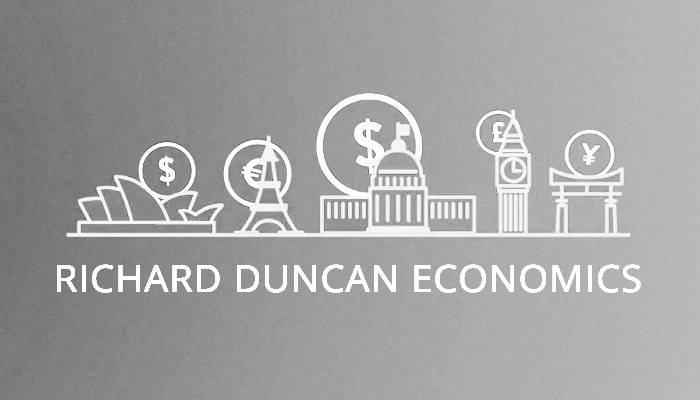Birth Of The Debt Culture

Posted April 26, 2011
Once US dollars ceased to be convertible into gold at the beginning of the 1970s, there was no longer any constraint on the amount of dollar-denominated debt that could be created by the Federal Reserve system or the Treasury Department, or, for that matter, the private sector. For the next decade, fear of inflation and the Fed’s still relatively tight control over the financial sector kept credit growth relatively constrained. Beginning in the early 1980s, however, a flood of imports into the United States began to profoundly affect the economy. By circumventing many of the domestic bottlenecks that had caused high rates of inflation, this influx kept prices in check. It also quickly created a large trade deficit that was funded by foreign capital inflows. Those inflows loosened credit conditions in the United States. As those changes were taking place, the deregulation of the banking industry was significantly reducing the Fed’s control over credit creation. When imports continued to surge, the stage was set for an explosion of credit creation.
Since the end of World War II, Washington had consistently pursued a policy of global trade liberalization. Five rounds of trade liberalization under the auspices of the General Agreement on Tariffs and Trade (GATT) had been successfully completed before the end of the 1960s. During that period the expansion of international trade occurred within the framework of the Bretton Woods system, which was structured to ensure that trade between nations balanced. It was only after the Bretton Woods system broke down in the early 1970s, therefore, that the global imbalance that eventually destabilized the world began to take shape.
The United States continued to promote international trade liberalisation even after Bretton Woods collapsed. The Tokyo Round of GATT was completed in 1979, and the Uruguay Round in 1993. From the early 1980s, however, the United States’ trade policy underwent a very important change. At that time, American policymakers became willing to tolerate very large current account deficits for the first time. Until then, the economically orthodox view had been that trade must balance, or else, in the case of a trade deficit, the economy would suffer deflationary consequences as resources left the country to pay for that deficit. In the first half of the 1980s, however, it became clear that the United States could run very large trade deficits and finance them with dollar-denominated debt.
Policymakers in the Reagan Administration seem to have embraced this new post–Bretton Woods reality. Imports appeared to help keep domestic inflation in check by opening up foreign sources of supply. Moreover, Americans did believe that “free trade” ultimately worked to everyone’s advantage. Their mistake was to assume that the expansion of world trade would produce the same benefits within an international monetary system based on fiat money as it had within a system based on the gold standard.
Unlike the gold standard or the Bretton Woods System, however, the post–Bretton Woods international monetary system had no mechanism for preventing large and persistent trade imbalances. In the mid-1980s, the US current account deficit grew to 3.5 per cent of GDP; two decades later, following the entry of China and other low-wage countries into the global economy, the deficit reached 6.0 per cent of GDP.
By then, what was understood to be “free trade” had actually become something very different, debt-financed trade. The debt that financed that trade, and the imbalances that built up around the world because of it, destabilized the global economy. Ultimately, when that debt could not be repaid, the global financial sector spiralled into systemic crisis and international trade collapsed. Had the Bretton Woods system remained in place, with its corollary of balanced trade, the global economy would have expanded at a much slower pace over the past thirty years than it has done. On the other hand, the global economy would not now be teetering on the brink of a new great depression. The high rates of economic growth during the 1980s, the 1990s, and most of the 2000s were great while they lasted, just as the Roaring Twenties must have been. Now that the global economy that boom created has broken down, we may not know for decades whether the boom years were worth their eventual price. The Roaring Twenties were certainly not worth the price paid during the 1930s and ’40s.
Note: For additional details please see The Corruption of Capitalism, Chapter 10: America Doesn’t Work.


Excellent article. I wonder what the author thinks of import certificates as a means to restore balanced trade. Warren Buffet proposed the idea several years ago.
https://money.cnn.com/magazines/fortune/fortune_archive/2003/11/10/352872/index.htm
Mr. Duncan, I wonder in your astute array of insights if you might comment on the current policy of the U.S. exporting inflation to China in retaliation for them not floating their currency fairly to market, giving them unfair trade advantages. We are causing them pain through that and I am curious if you would comment on whether Mr. Bernake’s QE policy is in reality solely aiming at China or if they are just another collateral damaged segment (as savers and middle class people that eat and need gas for their cars etc..). There is an interesting blog article on this you may find of interest today:
https://www.moneyandmarkets.com/the-dollar-sliding-or-crashing-44386?FIELD9=2